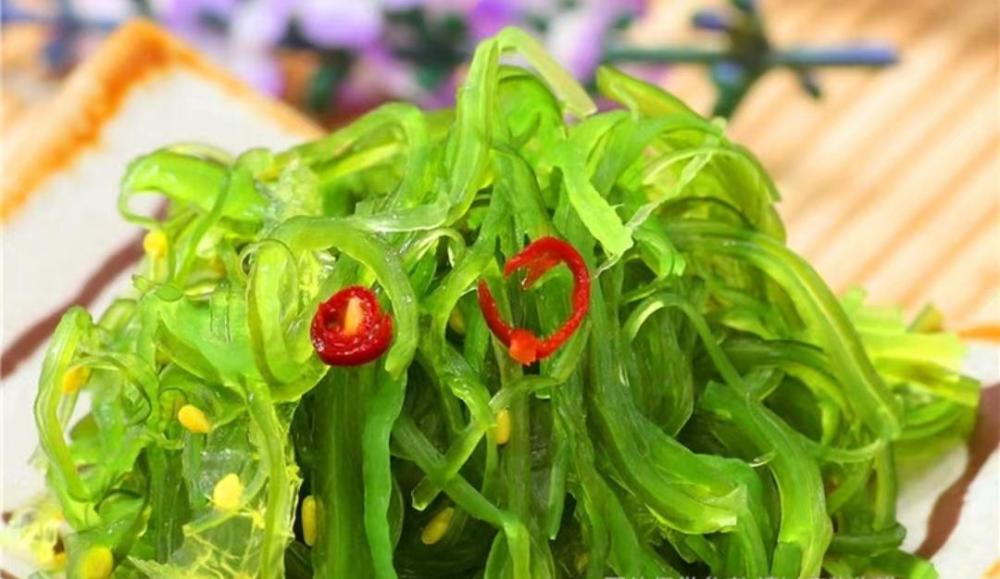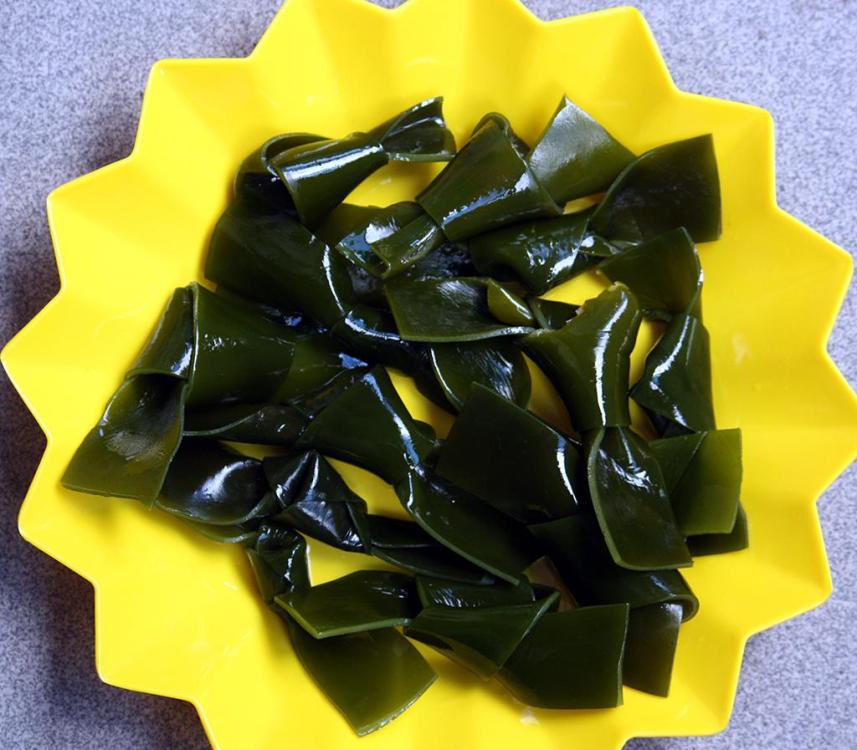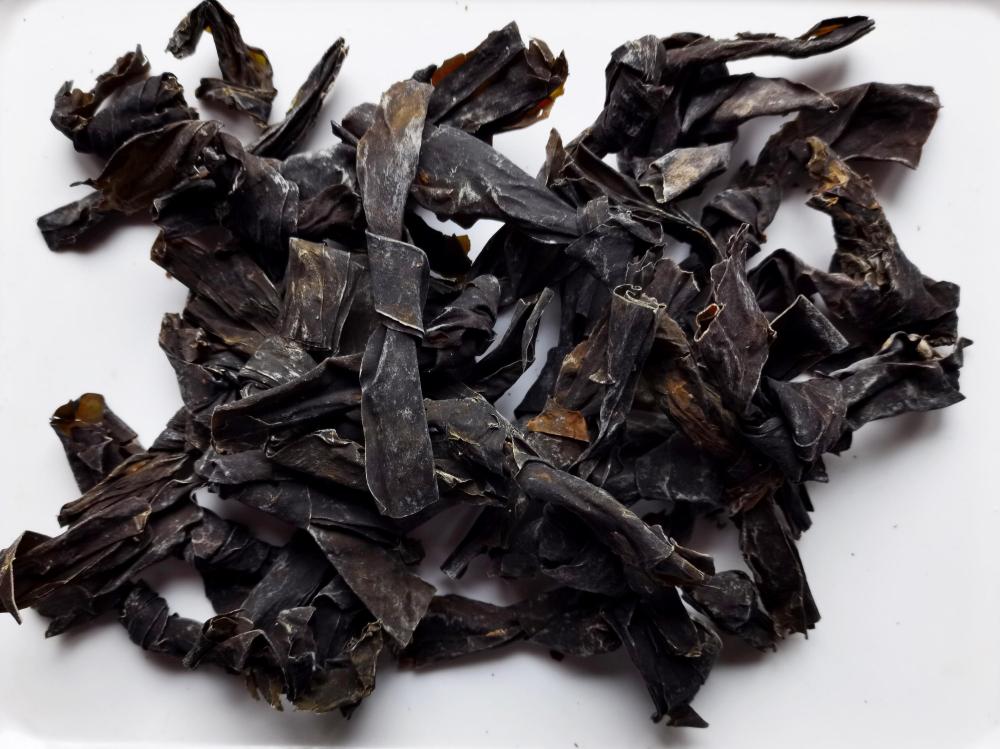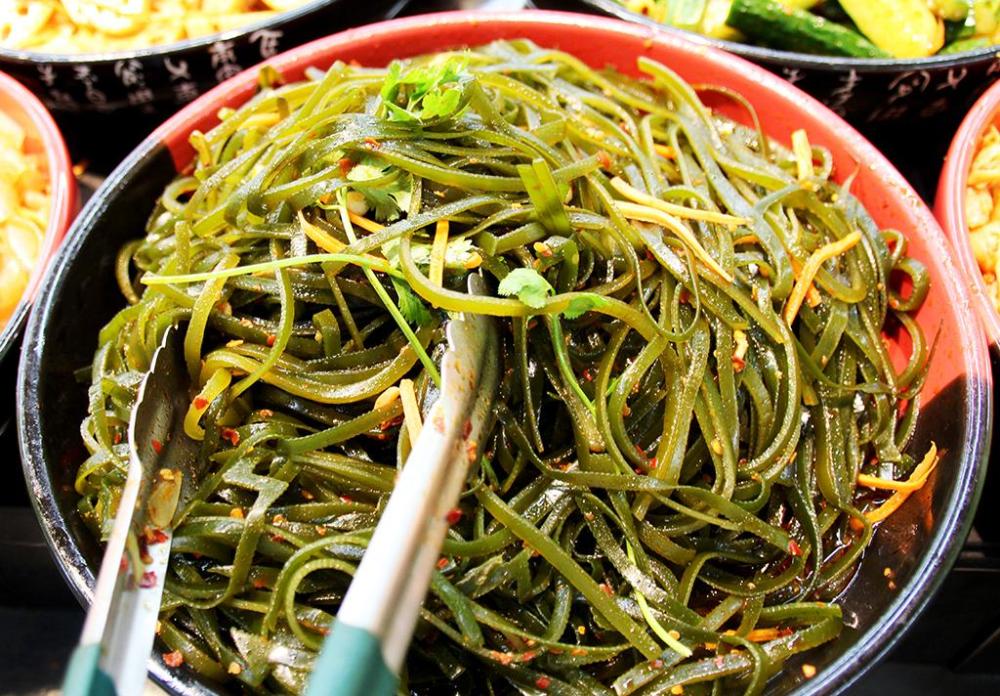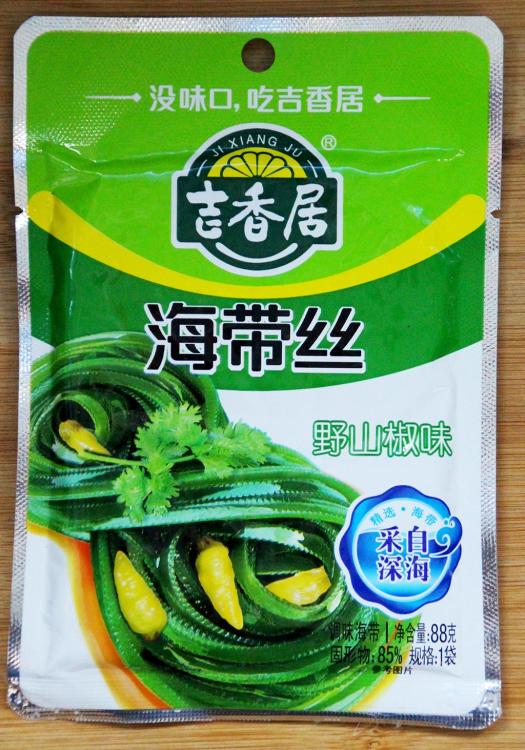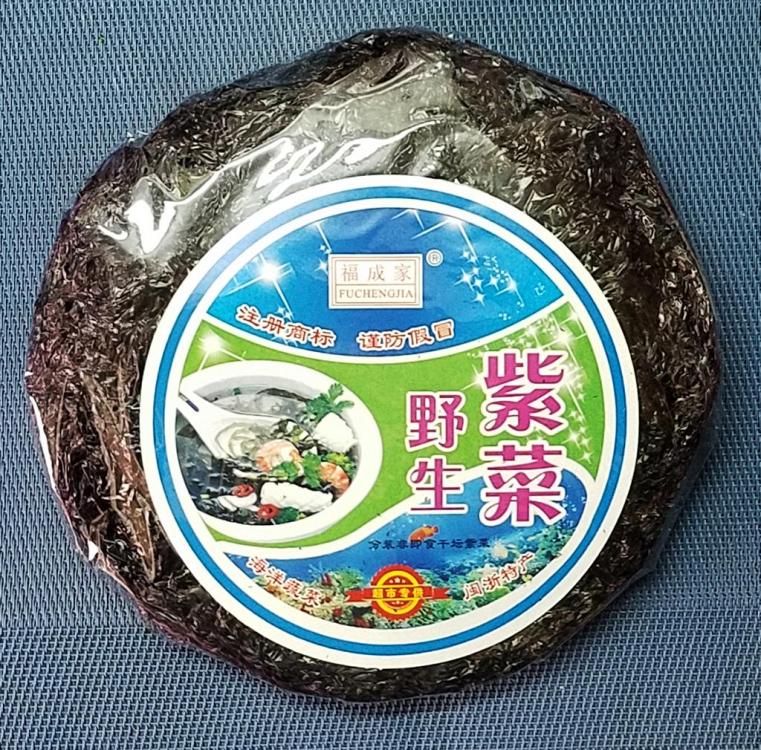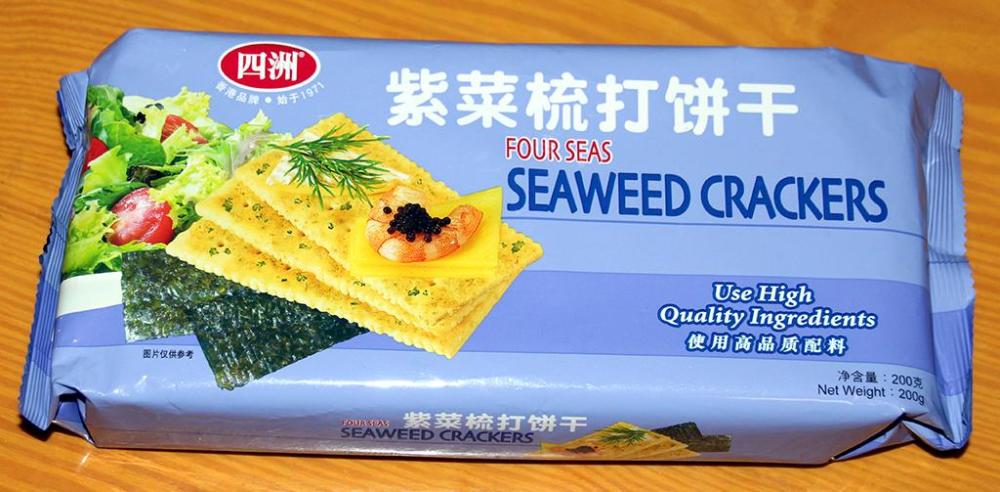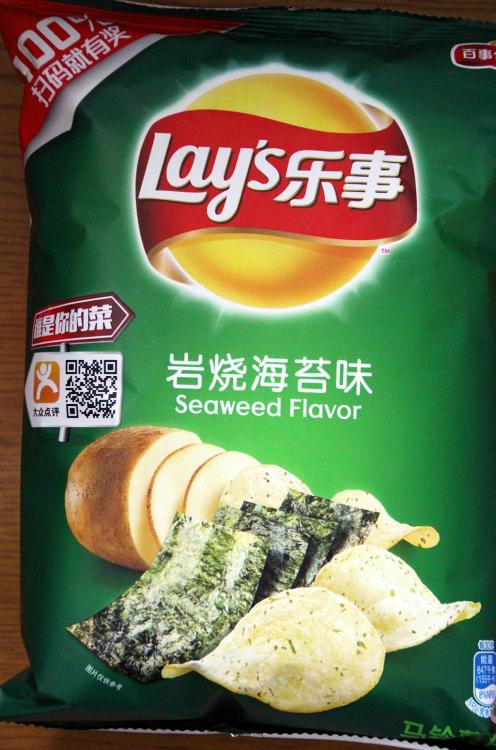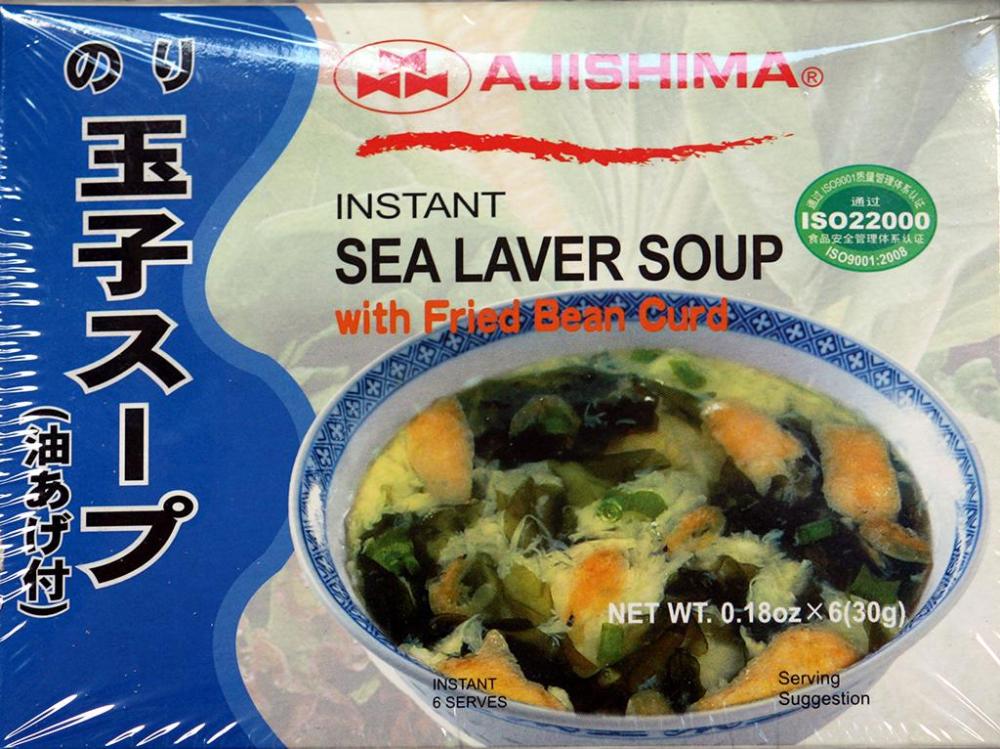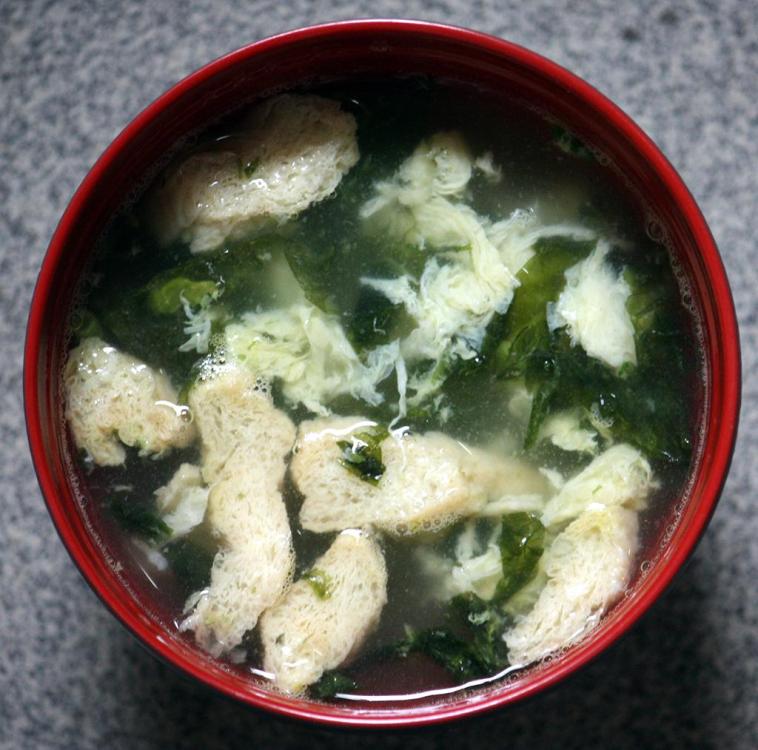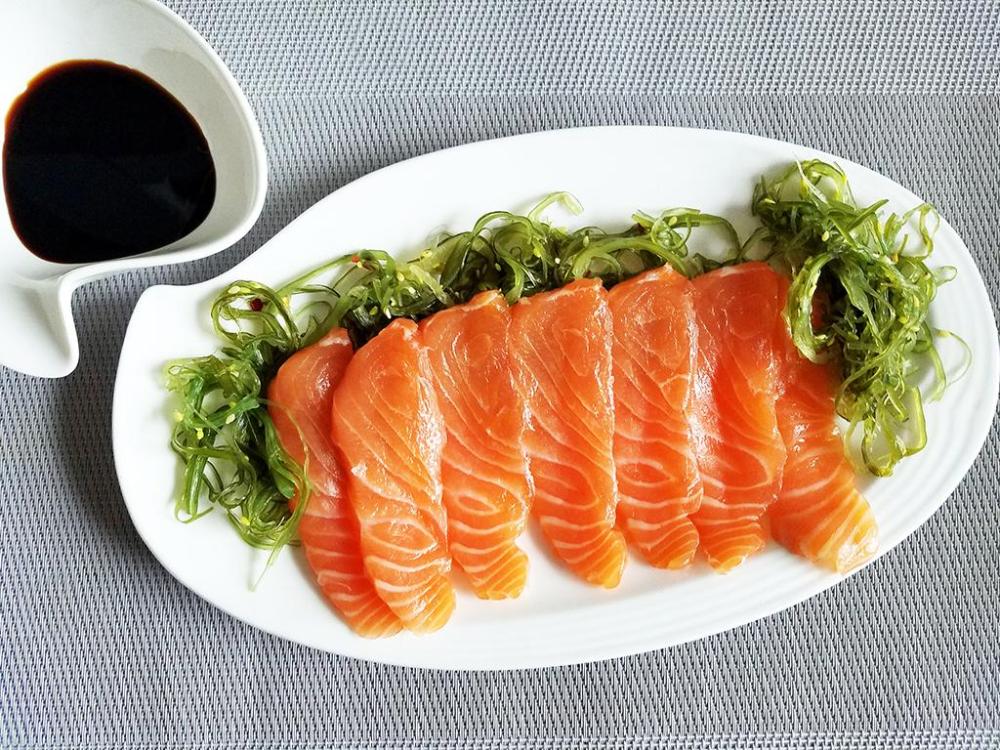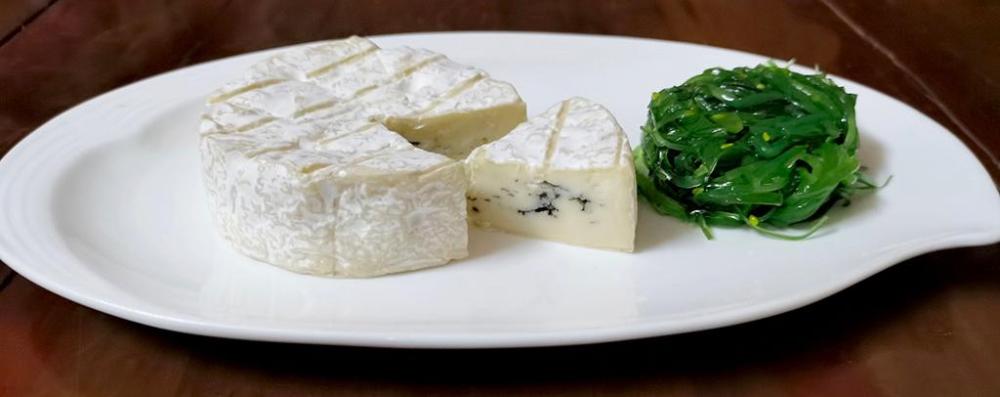15. 海藻 (hǎi zǎo)
Walk into my local supermarket and in one corner you are met by piles of what appears to be large sheets of distressed leather with a funky smell. This regularly baffles newcomers, as it did me. This ancient cow hide is on sale and there are even people buying it.
In fact, this stuff has never been wrapped around a cow. What you are confronted with is seaweed (海藻 (hǎi zǎo), specifically dried kelp 海带 (hǎi dài), literally 'sea belt', one of about 30 genera in the order Laminariales. These grow in the cold seas in the north east of China and is shipped here in various forms.
Kelp needs clean water at a temperature between 6 and 14℃ / 43 and 57℉. It takes its nutrition from the sun and so requires clear coastal waters that allow the sunlight to penetrate. Note that not all kelp species have the float bladders found in the North American variety.
In ideal circumstances, the kelp forests can grow to 45 metres / 150 ft tall, with some species growing 27 to 60 cm / 10 to 24 inches per day.
Not only do the kelp forests provide us with highly nutritional fodder, they offer protection and a diverse ecosystem to the many life forms which shelter within. Algae, fish and shrimp all take advantage, some living there all their lives. Others only use them as nursery areas for their young.
So how is kelp used? Much more than you might think. Even if you’ve never knowingly eaten it, you probably have ingested some at some point. It is used in toothpaste as a binding agent. You may have washed your hair with it! And if you are a fan of ranch dressing or common breakfast cereals, you’ve eaten it. It is used as a binder there, too. It is a good source of calcium for us oldies and vitamin K doesn’t go amiss either. It is also low in calories and, most importantly, it tastes good!
Kelp forests are under threat from rising sea temperatures and storms like El Nino wreak huge damage. Australia, for example, has been reported as losing more than 60 miles of forest to rising temperatures.
Back in the supermarket, besides the sheets of leather we can find kelp in more manageable pieces – both fresh and dried. Short pieces are tied into very popular kelp knots which are used in soups, hotpots, and cooked salads. It is also sold cut into strips like noodles.
Fresh Kelp Knots
Dried Kelp Knots
Kelp Knot Salad
Kelp "Noodles"
Kelp is also pickled and sold in small packets as a snack food.
Pickled Kelp
Pickled Kelp
But, kelp isn't the only seaweed on offer. We also have 紫菜 (zǐ cài), literally 'purple vegetable'. This is what you probably know as 'nori' - 海苔 or のり, in Japanese or 'laver', in English. Again there are several varieties, but they all belong to the Porphyra family.
Laver is often sold dried in sheets for use with sushi (or just to snack on) but we also get it in its fresh natural state. This is what should be in your seaweed and egg drop soup and in the best Chinese restaurants is your crispy seaweed, although that is nearly always fried cabbage. Here is is often sold dried in these circular packs from which we break off what we need. I always have some in the pantry.
It is also used in a number of manufactured goods such as imported instant soups from Japan, my favourite crackers and even Lay’s have got in on the act with laver flavoured chips, or to use their correct name, crisps. 😂
Instant Laver Soup from Japan
I have been known to crumble dried laver into beer batter for my fish and chips. A very versatile and healthy ingredient. I've also subbed it for furikake, the Japanese rice flavouring, when that has been unavailable.
Then we have my favourite of all the sea vegetables (seen in my first picture) . This is 海草 (hǎi cǎo), seagrass. Unlike kelp or laver, which are algae, these are true plants sharing characteristics with land-bound plants. In fact the approximately 60 different seagrasses are the only plants which can survive total, permanent immersion in water. They have flowers, fruit and seeds and form underwater meadows. Seagrass lawns also offer protection for young shrimp and other species. I've only ever seen this sold fresh.
I like this with almost everything. Always with fish, especially sushi or sashimi...
... but even with cheese.
Yet another is locally called 海石花 (hǎi shí huā) in Chinese. That literally translates as 'sea stone flower'. More commonly known as Dragon's Beard (龙须 - lóng xū). A yellowish fawn coloured weed, usually sold dried, but sometimes available fresh.
Scientists tell us that future generations may have to rely on seaweed and seegrasses as a food source, but at the same time tell us the same species are under threat. Seagrasses are also endangered by coastal 'development', by floods which disturb the sediment and by outboard motors etc. I won't be here to see it and I ain't religious but I pray for sense to prevail.


